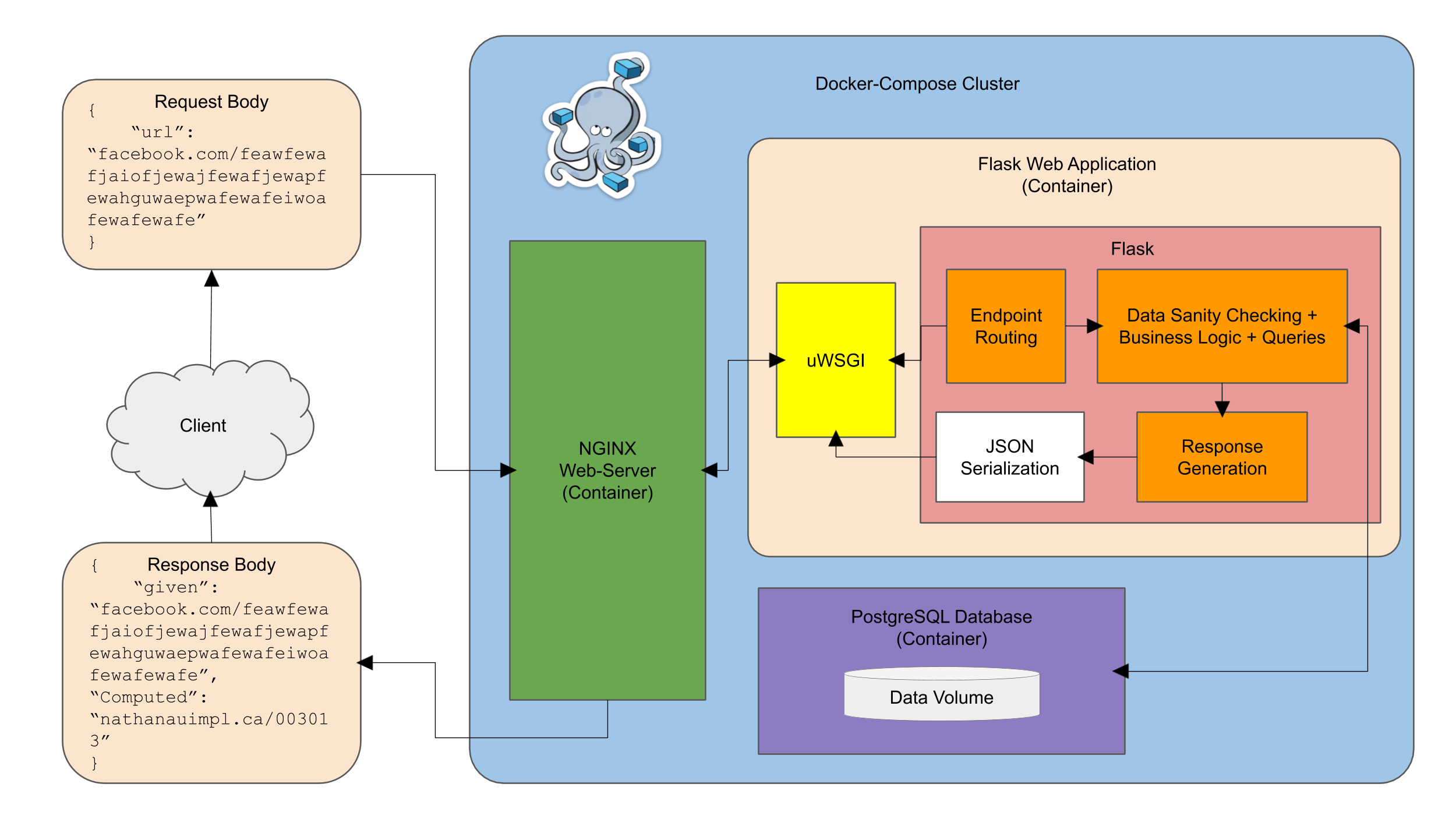The goal of this is to be able to map a long sequence of characters (long url) into a short, 6-digit url. Furthermore, we should be able to derive the long sequence (original url) from the shortened one.
Thus, a bijective function is needed to be able to go both ways.
- Hashing
- Base Conversion
My first thoughts were to attempt to use hashing to map each lengthy URL to a shorter URL. However, upon a little more thought, I realized that because there are so many URLs that could be cached into the system, it would be possible for collisions to occur, rendering this project completely useless. After performing a quick dive into the logic of most URL-compressors, I discovered that a very good approach to this would be to use Base Conversion.
Instead of using a bijective function to map between the shortened URL and the original, lengthy URL, a better alternative would be to first save the URL inside of a database with a certain unique number associated with it. This could be the row number (if using a relational database with tables), or just a randomly-generated UUID for non-relational databases. Using the row number, one would be able to quickly access the URL corresponding to it.
So on one hand, we have the domain, consisting of a random n-digit number. The codomain, on the other hand, would be the code converted into base 62. Here are some of the reasons why this base was chosen:
- There are 62 symbols that could be in the shortened code (numbers from 0-9, lower-case letters from a-z, and upper-case letters from A-Z). Thus, we can map each numerical value 0 to 61 to one of these symbols.
- This allows for several URLs to be stored. Since the code will be 6-digits and each digit will have 62 different possibilities, then we have a total of 62^6 possibilities AKA 62^6 possible URLs to be stored.
Here are some brief details describing the implementation of this project.
- Language: A LOT of Python and some SQL.
- Framework: Flask, a lightweight server-side framework for Python.
- Server-side: NGINX and uWSGI to follow proper server-side architecture.
- Containerization: Docker-compose to orchestrate several Docker containers together.
- Database: PostgreSQL, a common relational database.
Also, to practice applying Python in the actual industry, I included unit tests using Python's built-in module, unittest,for my custom utility classes to confirm their functionality. These can be found under the directory flask/base_62_mapper/base_62_mapper_test.py and flask/string_utils/string_utils.py
This project is built using Docker-Compose to orchestrate three main components. The first is an NGINX Web Server. The server is responsible for providing many features including:
- Acting as a reverse-proxy to redirect user requests to a web-server gateway interface.
- Hiding the application server's IP to provide anonymity from attackers.
- Load-balancing using techniques such as Round-Robin Balancing, to circulate and spread user requests to other potential servers. This feature is not currently availalbe because I have not configured more than 1 server.
The second is the Flask application server. This is where the logic is defined for shortening/lengthening URLs. The last is a PostgreSQL database for storing various URLs.
Shortening the URL: The URL that the user wants to shorten is sent as a request parameter to the endpoint /v1/shorten. The server then does a search in the PostgreSQL database to determine if there is a pre-existing shortened URL. If it does exist, then this is what is returned back to the user. Otherwise, it is added to the database as a new row,
the row number is returned, and converted into Base-62 before being transferred back to the user.
Lengthening the URL: The 6-digit sequence of characters appeneded to nathanauimpl.ca/ is extracted and converted from Base-62 into decimal representation, which is the row number in the table within the database. The saved URL is then returned to the user.
POST /v1/shorten: Given a long URL (up to 250 characters long), this shortens it and returns it in the form nathanauimpl.ca/{code}, where {code} is a 6-digit alphanumeric sequence of characters.
Sample Request
{
"url": "facebook.com/abcdafewewafefewafewafewafewafewafewafewafewafe"
}Sample Response
{
"given": "facebook.com/abcdafewewafefewafewafewafewafewafewafewafewafe",
"computed": "nathanauimpl.ca/0b03fc"
}POST /v1/lengthen: Given a shortened URL (generated by this service) in the form nathanauimpl.ca/{code}, this endpoint returns the original long URL.
Sample Request
{
"url": "nathanauimpl.ca/0b03fc",
}Sample Response
{
"given": "nathanauimpl.ca/0b03fc",
"computed": "facebook.com/abcdafewewafefewafewafewafewafewafewafewafewafe"
}Endpoints:
POST /v1/invalidate: Removes a URL from the database that is no longer needed.
Features:
- Load Balancing with NGINX
